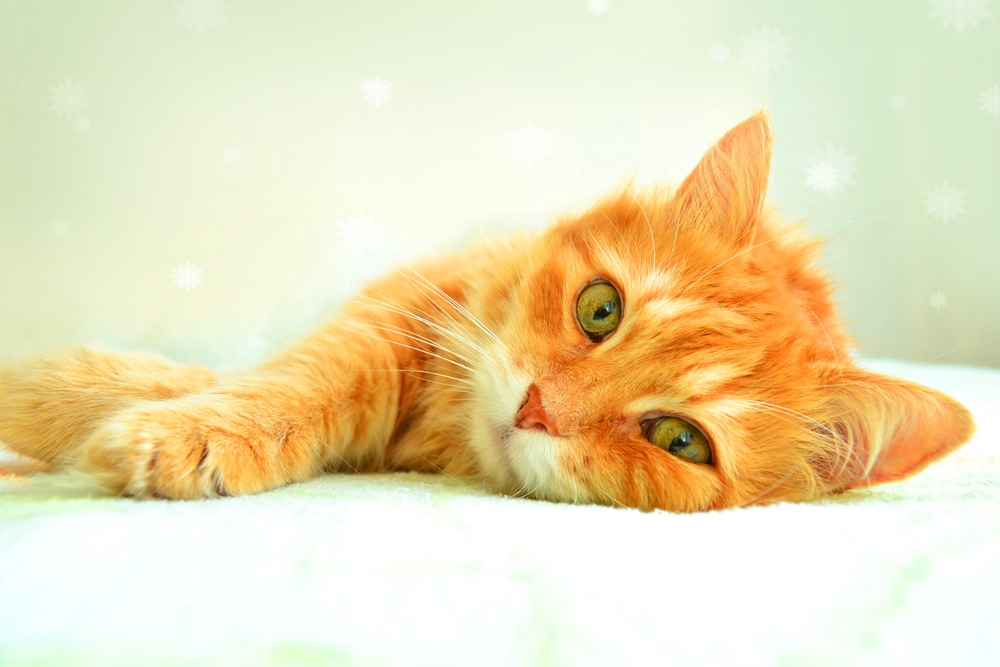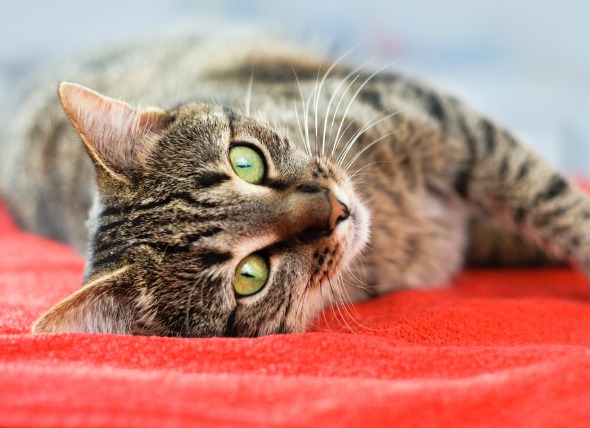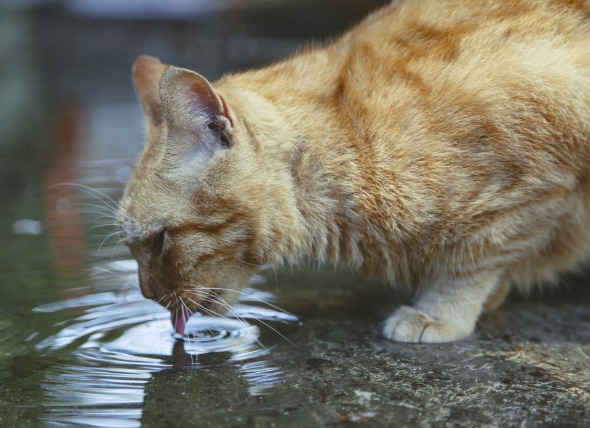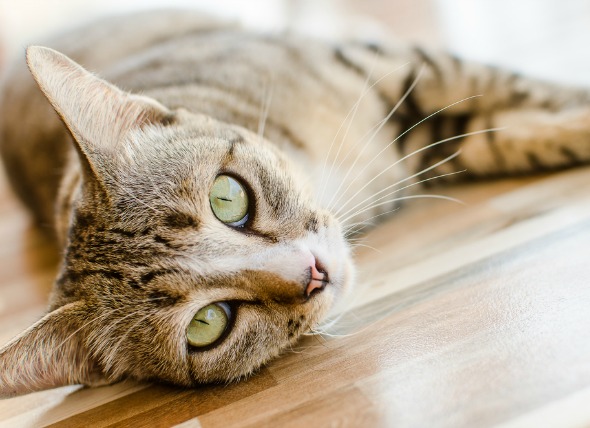
Severe drying and inflammation of the cornea (the transparent front part of the eye) and conjunctiva (the clear membrane that covers the white part of the eye) can often be attributed to a medical condition known as keratoconjunctivitis sicca (KCS). Characterized by a deficiency of aqueous tear film over the surface of the eye and in the lining of the lids, the condition is also sometimes called dry eye syndrome. Although KCS is relatively uncommon in cats, there is some suspicion that females may be more predisposed to the condition than males.
Your veterinarian will perform a thorough physical and ophthalmological exam on your cat, taking into account the background history of symptoms and possible incidents that might have led to this condition. A Schirmer tear test can be used to measure tear values and the amount of wetness on the eye; that is, the amount of tear production that is taking place in the tear ducts and the amount available for the eye. A low value, for example, would be indicative of KCS.
Your doctor may also take a sample of the aqueous fluid for culture, in order to determine how severe bacterial growth is in the eye and whether there is an infection that is underlying the KCS. To identify abrasions and/or ulcerations of the eye, meanwhile, he or she may use a fluorescein stain, whereby a non-invasive dye is placed on the eye to better see the details under a blue light.
Unless there is a secondary disease that calls for hospitalization, your cat will be treated on an outpatient basis. Topical medications, such as artificial-tear medication and possibly a lubricant can be prescribed and administered to compensate for your cat's lack of tears. You will need to be sure to clean your cat's eyes before you administer the medication, along with keeping the eyes clean and free of dried discharge. Some patients with KCS are predisposed to severe corneal ulceration, so you will need to call your veterinarian at once if the pain increases so that it can be treated before serious injury occurs.
Your veterinarian will probably also prescribe a topical antibiotic to be placed on the eye, either to treat a bacterial infection or as a preventative, and a topical corticosteroid or cyclosporine (an immunosuppressant drug that reduces the activity of a patient’s immune system) can be used for treatment of inflammation and swelling. Other medications may be prescribed depending on the underlying diseases that have brought on this syndrome.
A surgical procedure called parotid duct transposition may be used to reroute the parotid duct. This procedure reroutes the aqueous ducts in such a way that saliva can be used to compensate for the lack of tears, delivering fluid to the inferior conjunctival cul-de-sac. It’s performed much less frequently since cyclosporine was introduced. Saliva can be irritating to the cornea; some patients are uncomfortable after surgery and require ongoing medical therapy.
Your veterinarian will want to recheck your cat at regular intervals to monitor response and progress. The Schirmer tear test will probably be performed again four to six weeks after initiating cyclosporine to evaluate response. Your cat should have received the drug the day of the visit. Immune-mediated diseases usually require life-long treatment. Other types of disease may be transient and may require treatment only until tear production returns.
 Aspirin Poisoning in Cats
Aspirin Toxicity in Cats
Aspirin, a non-steroidal
Aspirin Poisoning in Cats
Aspirin Toxicity in Cats
Aspirin, a non-steroidal
 Low Blood Calcium in Cats
Hypocalcemia in Cats
The term "hypocalcemia&
Low Blood Calcium in Cats
Hypocalcemia in Cats
The term "hypocalcemia&
 How to Repel Cats With Citrus
How to Repel Cats With Citrus
How to R
How to Repel Cats With Citrus
How to Repel Cats With Citrus
How to R
 Intestinal Parasite (Cryptosporidia) in Cats
Cryptosporidiosis in Cats
Cryptosporidium is an i
Intestinal Parasite (Cryptosporidia) in Cats
Cryptosporidiosis in Cats
Cryptosporidium is an i
 Black, Tarry Feces due to Presence of Blood in Cats
Melena in Cats
Melena, the term used to des
Black, Tarry Feces due to Presence of Blood in Cats
Melena in Cats
Melena, the term used to des
Copyright © 2005-2016 Pet Information All Rights Reserved
Contact us: www162date@outlook.com